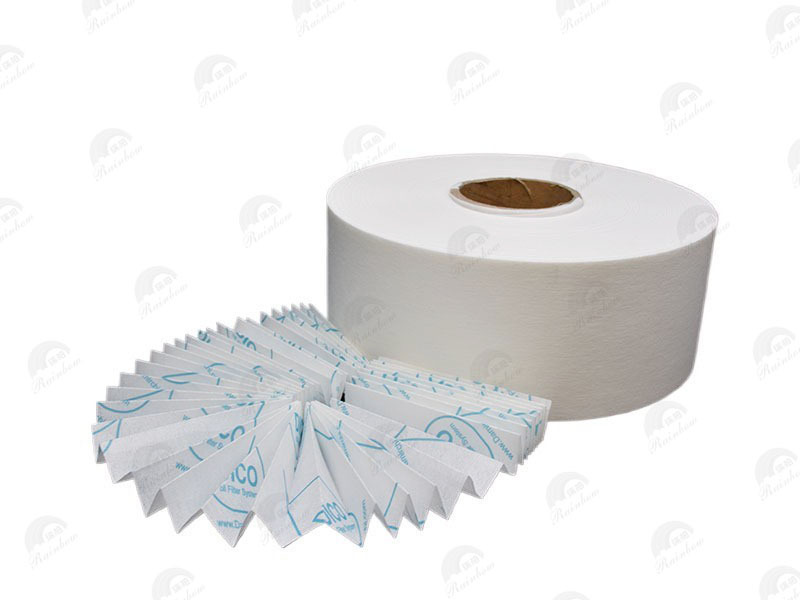How to Choose the Right Double Sided Fusible Nonwoven Interlining for Various Fabrics
Release time:
2025-06-27
How to Choose the Right Double Sided Fusible Nonwoven Interlining for Various Fabrics
Table of Contents
- Understanding Double-Sided Fusible Nonwoven Interlining
- Key Features of Fusible Nonwoven Interlining
- Different Types of Fabrics and Their Requirements
- How to Select the Right Interlining for Your Fabric
- Application Techniques for Double-Sided Fusible Interlining
- Troubleshooting Common Issues with Interlining
- Sustainability and Nonwoven Interlining
- Frequently Asked Questions
- Conclusion
Understanding Double-Sided Fusible Nonwoven Interlining
Double-sided fusible nonwoven interlining is a crucial material in the textile industry, especially for those who engage in garment making or craft sewing. This versatile product offers adhesive properties on both sides, allowing it to bond fabric layers seamlessly. The nonwoven structure ensures a lightweight yet strong interface, providing stability and support for various textile applications.
Choosing the right interlining begins with understanding its composition and properties. Nonwoven interlining is produced from synthetic fibers like polyester or a blend of natural and synthetic materials. These fibers are bonded together through heat and pressure, creating a fabric that is durable and easy to handle.
**Key Benefits of Double-Sided Fusible Nonwoven Interlining**:
- **Versatility**: Suitable for a wide range of fabrics, including cotton, silk, and wool.
- **Ease of Use**: The fusible feature allows for a straightforward application process without the need for stitching.
- **Support**: Adds structure to garments, enhancing the overall appearance and longevity.
Key Features of Fusible Nonwoven Interlining
When selecting double-sided fusible nonwoven interlining, it’s essential to consider its key features. Here are some critical attributes that can influence your choice:
Weight
The weight of interlining plays a significant role in how it interacts with the fabric. Lightweight interlining is ideal for delicate fabrics, while heavier options provide more stability for structured garments.
Adhesive Quality
The adhesive strength varies between products. A stronger adhesive is necessary for fabrics that require additional support, while lighter adhesives may suffice for softer textiles.
Breathability
Breathability is crucial, especially for garments worn close to the skin. Nonwoven interlining should allow moisture and air to pass through to ensure comfort.
Washability
Consider how the interlining performs after washing. Some fusible nonwoven options can withstand multiple wash cycles without losing their integrity.
Color Options
While many interlinings come in white or cream, colored options are available for specific applications. This is particularly useful for projects where interlining may be visible.
Different Types of Fabrics and Their Requirements
Understanding the different types of fabrics is essential for choosing the right interlining. Each fabric type has unique requirements that can influence the selection process.
Cotton
Cotton is a natural fiber known for its breathability and comfort. Lightweight double-sided fusible nonwoven interlining is often recommended to maintain the softness while providing necessary support.
Silk
Silk requires a delicate approach. A lightweight, less aggressive fusible interlining is ideal to avoid damaging the fabric’s natural drape and sheen.
Wool
Wool is heavier and can benefit from a medium-weight fusible interlining for added structure. This type of interlining helps prevent stretching and sagging.
Denim
For heavier fabrics like denim, opt for a heavier fusible nonwoven interlining. This choice will provide the necessary support while ensuring the seams are durable.
Knits
Knitted fabrics require flexibility. A lightweight fusible interlining with a softer adhesive will help maintain the fabric’s stretch while providing stability.
How to Select the Right Interlining for Your Fabric
Choosing the right double-sided fusible nonwoven interlining involves several factors. Here’s a step-by-step guide to help you make the best choice:
Step 1: Assess Fabric Needs
Identify the type of fabric you’re working with and its specific requirements. Consider weight, drape, and intended use.
Step 2: Evaluate Project Goals
Determine the purpose of your project. Will it be worn frequently? Does it require structure or flexibility? This assessment will guide your interlining choice.
Step 3: Test Samples
Whenever possible, test samples of interlining with your fabric. This trial will help you assess how the two materials work together in terms of adhesion and overall appearance.
Step 4: Consult Professionals
If unsure, consult with fabric store professionals or sewing experts. They can provide valuable insights and recommend specific products based on your project.
Step 5: Make the Purchase
Once you’ve gathered information and tested samples, select the interlining that best meets your project requirements and budget.
Application Techniques for Double-Sided Fusible Interlining
Applying double-sided fusible nonwoven interlining correctly is crucial for achieving seamless results. Here are some effective techniques:
Preparation
Before application, pre-wash your fabric to remove any sizing or treatment that may prevent proper adhesion. Iron the fabric to ensure it is smooth and wrinkle-free.
Cutting the Interlining
Cut the interlining slightly smaller than the fabric pieces to avoid bulk at the seams. This step ensures a cleaner finish.
Adhering the Interlining
1. Place the adhesive side of the interlining against the wrong side of the fabric.
2. Use a pressing cloth to protect the fabric and interlining.
3. Set your iron to the appropriate temperature for your fabric type, and press down for 10-15 seconds in each section.
4. Allow the fabric to cool before moving it to ensure a strong bond.
Finishing the Project
Once adhered, proceed with your sewing project as usual. Take care to use the correct stitching techniques for your fabric and interlining combination.
Troubleshooting Common Issues with Interlining
Even with careful selection and application, challenges can arise when working with double-sided fusible nonwoven interlining. Here are some common issues and solutions:
Puckering
If puckering occurs, it may be due to excessive heat or improper pressing technique. Always use a pressing cloth and test the heat on a fabric scrap first.
Peeling
If the interlining begins to peel away after washing, it may indicate an inadequate bond. Ensure you follow the manufacturer’s instructions regarding heat settings and application times.
Visible Interlining
To prevent the interlining from showing through, choose a color that closely matches the fabric or use a lighter weight that won’t add bulk.
Loss of Shape
If your garment loses its shape, consider using a heavier interlining or increasing the amount of interlining applied to maintain structure.
Sustainability and Nonwoven Interlining
As sustainability becomes increasingly important in the textile industry, it’s essential to consider the environmental impact of materials used. Nonwoven interlining can be produced from recycled materials and is often more sustainable than traditional woven interlining options.
Choosing Eco-Friendly Options
When selecting interlining, look for products labeled as eco-friendly or made from sustainable materials. This choice supports responsible manufacturing practices and reduces textile waste.
Recycling Nonwoven Interlining
While recycling nonwoven interlining can be challenging due to its adhesive components, some manufacturers are developing solutions to repurpose these materials. Always check local recycling guidelines to ensure proper disposal.
Frequently Asked Questions
1. What is double-sided fusible nonwoven interlining used for?
Double-sided fusible nonwoven interlining is used to add support and structure to various fabrics, making it ideal for garment construction, crafting, and home décor projects.
2. Can I use fusible interlining on delicate fabrics?
Yes, but it’s essential to choose a lightweight option and use a lower heat setting when applying it to prevent damaging the fabric.
3. How do I know if the interlining is suitable for my fabric?
Consider the weight, adhesive quality, and breathability of the interlining, as well as test samples with your fabric to ensure compatibility.
4. Is double-sided fusible nonwoven interlining washable?
Most products are designed to withstand washing; however, always check the manufacturer’s guidelines for specific care instructions.
5. What should I do if the interlining doesn’t adhere properly?
Make sure you are using the correct heat setting and pressing technique. If problems persist, consider trying a different adhesive product or checking for any residue on the fabric.
Conclusion
Selecting the right double-sided fusible nonwoven interlining for various fabrics can significantly impact the quality and longevity of your sewing projects. By understanding the types of interlining available, evaluating the needs of your fabric, and applying the interlining correctly, you can achieve professional results in your crafting and garment-making endeavors. Remember to consider eco-friendly options as you make your choices, ensuring that your projects are not only beautiful but also sustainable. By following the guidelines outlined in this comprehensive guide, you can confidently choose the perfect interlining for any fabric project.
Double Sided Fusible Nonwoven Interlining
Previous Page
Previous Page
Latest News
Nantong Rainbow Technology Co., Ltd.
Telephone:+86-13587673537
E-mail:chrislc717@163.com
Address: Group 42, Xizansi Village, Xiting Town, Tongzhou District, Nantong City, Jiangsu Province

Copyright©2024 Nantong Rainbow Technology Co., Ltd. | Powered by www.300.cn
Copyright©2024 Nantong Rainbow Technology Co., Ltd.
Powered by www.300.cn




